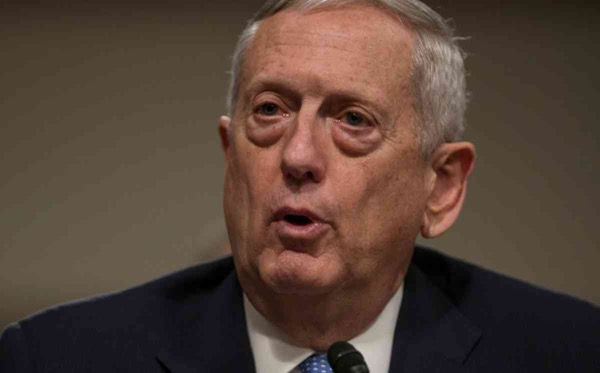
Defence Secretary James Mattis said Syria would be “ill-advised ever again to use chemical weapons”.
Syria has denied a chemical attack on the rebel-held town of Khan Sheikhoun last week that left 89 people dead.
G7 nations are meeting in Italy to discuss policy and how to persuade Russia to abandon its Syrian ally.
The US fired 59 cruise missiles at Syria’s Shayrat airbase last Thursday, following the suspected chemical attack a day before.
Mr Mattis said the “measured response” by the US had “resulted in the damage or destruction of fuel and ammunition sites, air defence capabilities and 20% of Syria’s operational aircraft”.
He added: “The Syrian government has lost the ability to refuel or rearm aircraft at Shayrat airfield and at this point, use of the runway is of idle military interest.”
The Syrian military admitted significant material damage but a Russian defence ministry spokesman said only six Syrian Air Force MiG-23s, plus a number of buildings, were destroyed and that only 23 of the missiles had reached Shayrat.
Mr Mattis said the strike had shown the US would “not passively stand by while [Syrian President Bashar al-Assad] murders innocent people with chemical weapons”.
White House spokesman Sean Spicer said further strikes were on the table.
“The sight of people being gassed and blown away by barrel bombs ensures that if we see this kind of action again, we hold open the possibility of future action,” he said.
Meanwhile, the Associated Press news agency quoted a senior US official as saying that the Russians knew of the chemical attack, because a drone had been flying over a hospital in Khan Sheikhoun as victims sought help. Hours later a jet bombed the hospital in what the US believed was an attempt to cover up the attack, the agency said.
What is being discussed at the G7?
The two-day meeting of foreign ministers in Lucca in Tuscany is aiming to hammer out a unified approach to the Syria conflict.
UK Foreign Secretary Boris Johnson said the message from the meeting should be clear – that Russian President Vladimir Putin must be made to abandon his support for Mr Assad.
“He’s toxifying the reputation of Russia by his continual association with a guy who has flagrantly poisoned his own people,” Mr Johnson said.
He said the meeting would be “discussing the possibility of further sanctionscertainly on some of the Syrian military figures and indeed on some of the Russian military figures who have been involved in co-ordinating the Syrian military efforts”.
Russia is already under a raft of sanctions imposed by the US and EU in response to the annexation of Crimea and the crisis in eastern Ukraine.
These would be the first sanctions against Russian figures over Syria if they were to be adopted, but it is far from clear they will be.
US Secretary of State Rex Tillerson heads from Lucca to Moscow on Tuesday, and will want to confront the Russians with a unified set of demands.
However the G7, which groups Canada, France, Germany, Italy, Japan and the UK along with the United States – with the EU also represented – is still seeking clarification of Washington’s policy on Syria.
Mr Tillerson strongly criticised Russia for failing to prevent Syria from carrying out the suspected chemical attack.
But he also said there had been “no change to our military posture” in Syria following the US airbase strike and that Washington’s “first priority” in Syria was to defeat so-called Islamic State (IS).
Russia says the US has failed to provide evidence that Syria has chemical weapons.
Russia and Iran, President Assad’s key military backers, are also threatening retaliation if there are any further American air strikes.
BBC

Leave a Reply
You must be logged in to post a comment.